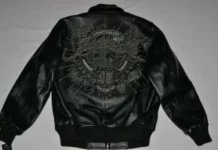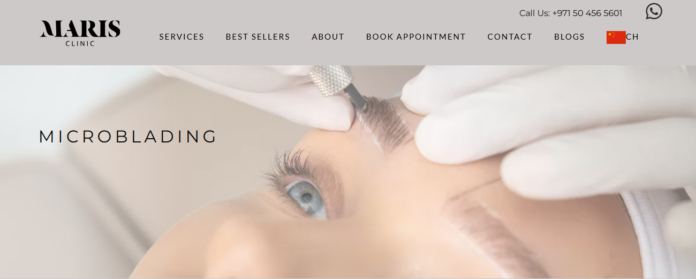Eyebrow microblading in Dubai has gained significant popularity over recent years as a way to achieve flawless, well-shaped eyebrows. As an alternative to traditional methods of eyebrow enhancement, microblading offers a semi-permanent solution for those looking to achieve fuller, natural-looking brows.
However, for many individuals, there is often confusion between microblading and traditional tattooing, especially when it comes to longevity, technique, and overall results. This article delves into the key differences between traditional tattooing and eyebrow microblading in Dubai, helping you understand which method might be the best choice for your needs.
What is Eyebrow Microblading?
Eyebrow microblading is a semi-permanent cosmetic procedure that involves using a fine blade to deposit pigment into the skin’s upper layers. The process mimics the appearance of natural hair strokes, creating fuller, more defined brows. The technician uses a specialized handheld tool with tiny needles to apply the pigment, ensuring a natural-looking result that blends seamlessly with the client’s existing brow hair.
Traditional Tattooing: The Basics
Traditional tattooing, on the other hand, is a permanent form of body art that involves injecting ink deep into the skin’s dermal layer using an electric tattoo machine. The process creates a permanent design or image, including eyebrow tattoos, by depositing pigment into the skin. Unlike microblading, traditional tattooing uses a machine with needles that pierce the skin at a greater depth, making it a more permanent solution.
Key Differences Between Eyebrow Microblading and Traditional Tattooing
1. Technique and Application Process
The most significant difference between eyebrow microblading and traditional tattooing is the technique and application process. As mentioned earlier, microblading is performed using a fine blade to create delicate, hair-like strokes, while traditional tattooing uses a needle and tattoo machine to inject pigment into the deeper layers of the skin.
Microblading is a manual process, and the technician controls the pressure and angle of the blade to achieve a natural-looking result. It is more customizable and can be adjusted to match the natural shape of the brows and the client’s unique facial features.
In contrast, traditional tattooing uses a mechanical device to insert the pigment into the skin, making it more suited for larger designs and permanent tattoos rather than the intricate, detailed hair strokes associated with microblading. This method often results in a much harsher, less natural-looking finish, especially when applied to the delicate skin of the eyebrows.
2. Longevity
Another significant difference between eyebrow microblading and traditional tattooing is the longevity of the results. Eyebrow microblading in Dubai is typically semi-permanent, lasting anywhere from 12 to 18 months. The pigment used in microblading fades gradually over time as the skin naturally sheds and renews itself. This is why clients often need touch-ups every year or so to maintain the shape and color of their brows.
In contrast, traditional tattoos are permanent. The ink is injected deeper into the skin, which means that it remains visible for a much longer period. While the tattoo’s color may fade slightly over the years, it does not fade completely, and touch-ups may be required to restore the vibrancy of the ink.
3. Appearance and Results
When it comes to appearance, eyebrow microblading typically results in a more natural, hair-like finish. Because the pigment is deposited in thin, individual strokes, it mimics the natural growth of eyebrow hairs, giving the brows a fuller yet subtle look. This is ideal for individuals with sparse or thinning eyebrows who want to enhance their shape without looking overly done.
On the other hand, traditional eyebrow tattoos often appear bolder and more solid. The tattooing process deposits more pigment into the skin, and the result is usually more defined, with less texture and dimension. While some people may prefer this look, it can sometimes look unnatural, especially if the tattoo is too dark or the shape doesn’t suit the person’s natural brow pattern.
4. Pain and Recovery Time
Both procedures involve some level of discomfort, but the pain experienced during eyebrow microblading is typically much less intense than that of traditional tattooing. Microblading is a minimally invasive procedure, and most people report feeling only mild discomfort during the process. To minimize pain, a topical numbing cream is applied to the eyebrow area before the procedure begins.
Traditional tattooing, on the other hand, tends to be more painful due to the deeper penetration of the needle and the use of a mechanical machine. The pain can vary depending on the individual’s pain tolerance and the area being tattooed. Recovery time for traditional eyebrow tattoos is also longer compared to microblading, as the deeper ink penetration can cause more irritation and swelling.
5. Color and Fading
One of the most significant issues with traditional eyebrow tattoos is that they tend to fade into an unnatural, bluish or greenish tint over time. This is because the ink used in tattooing is designed for the skin’s deeper layers, and over time, it can break down, causing the color to shift. In contrast, eyebrow microblading pigments are designed to fade more naturally, and with proper aftercare, the color tends to remain truer to the original shade.
While eyebrow microblading will fade over time, it generally does so more gracefully than traditional tattooing, ensuring that the client’s brows continue to look soft and natural.
6. Safety and Risks
Both eyebrow microblading and traditional tattooing come with their respective risks, but the risks are generally higher with traditional tattooing due to the deeper penetration of the needle and the potential for allergic reactions to tattoo ink. Additionally, traditional tattoos carry a higher risk of infection due to the invasive nature of the procedure.
Eyebrow microblading, when performed by a licensed and experienced professional, is considered relatively safe. Since the pigment is applied to the skin’s surface layers, there is less risk of complications compared to deeper tattoo ink. However, it’s still essential to choose a reputable technician who adheres to strict hygiene practices.
Both eyebrow microblading and traditional tattooing have their advantages and drawbacks, and the right choice ultimately depends on your personal preferences and desired outcomes. Eyebrow microblading in Dubai offers a more natural, customizable, and semi-permanent solution for those looking to enhance their brows with minimal pain and recovery time. In contrast, traditional tattooing is a more permanent option but may not provide the same level of natural-looking results or flexibility.































